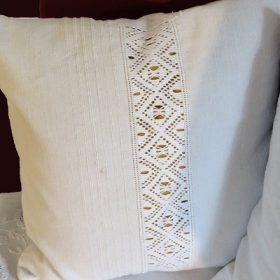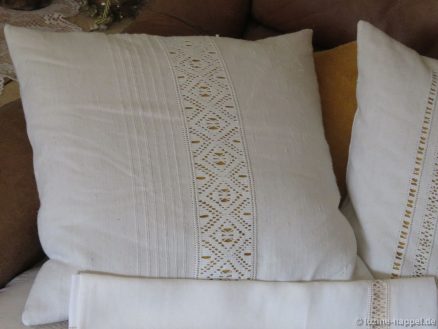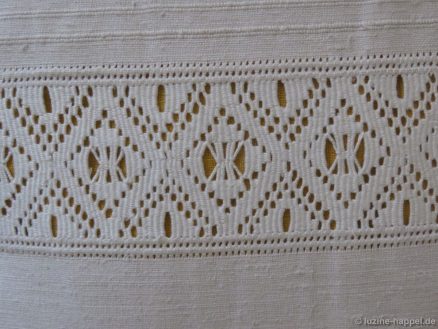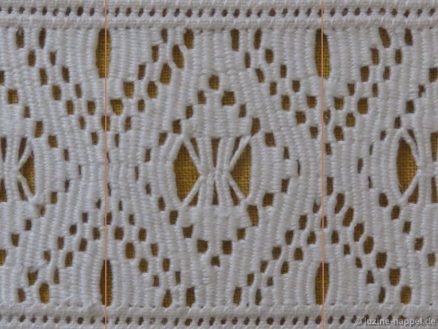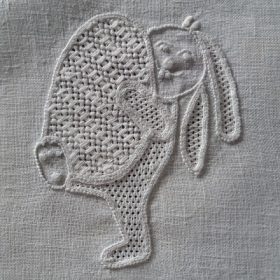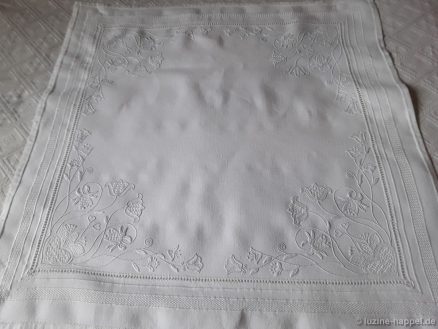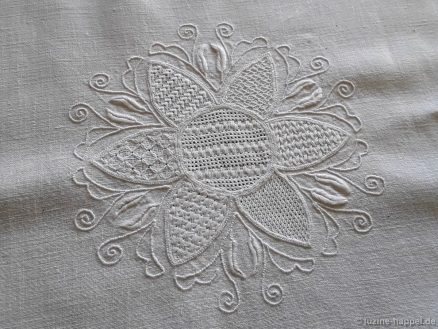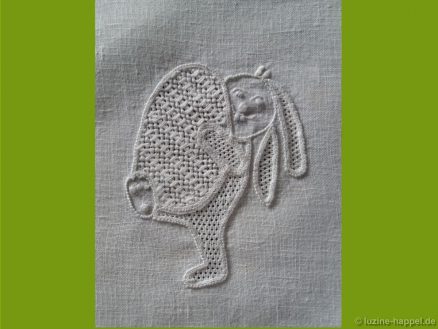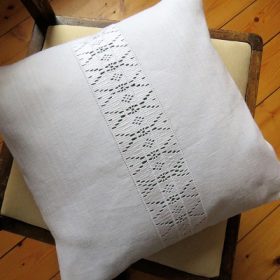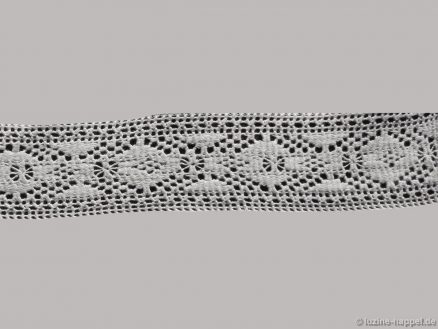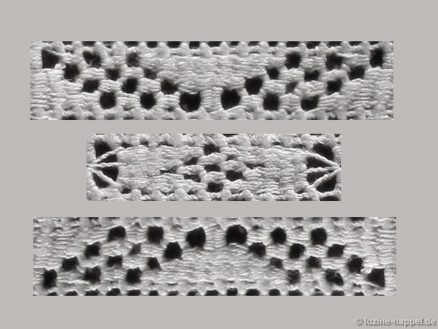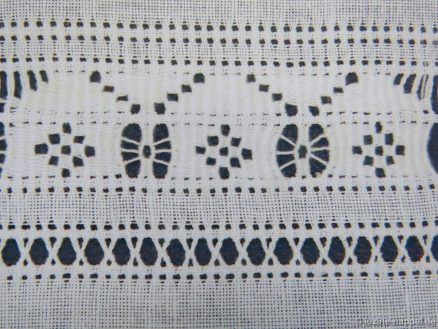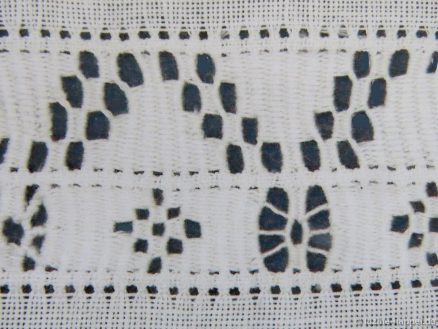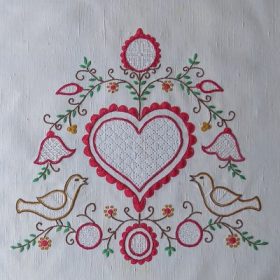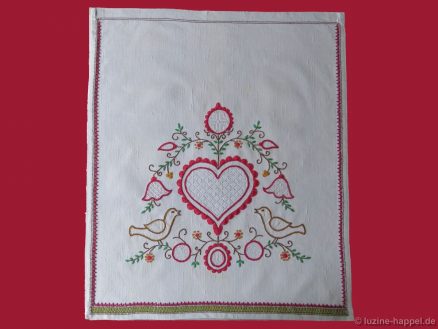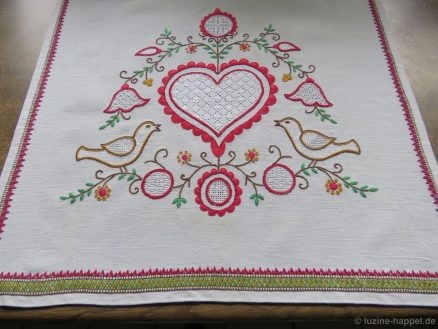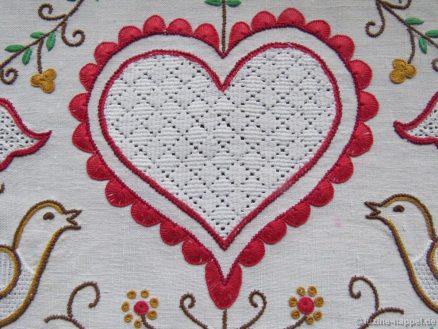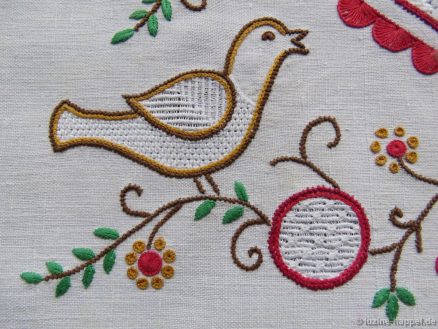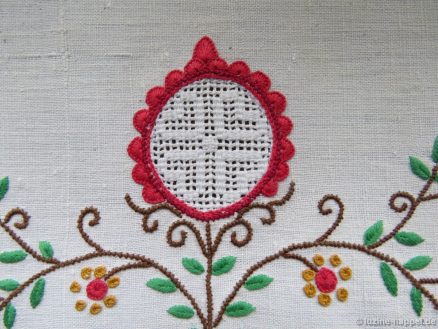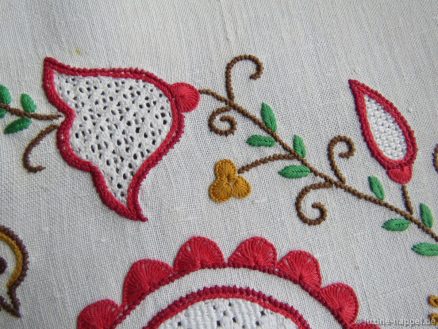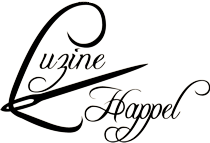Combined needle-weaving bands are to be worked on striped linen #926 in the middle between two stripes of fabric. The needle-weaving bands should run continuously across the front and back of the pillowcase.
The pillowcase should have a finished size of 38 cm x 38 cm (seam allowance 1 cm, hem allowance 2 cm).
Measurement calculation:
Width: 1cm + 38cm + 1cm + 4cm (shrinkage about 8-10%) = 44cm
Length: 2cm + 38cm + 38cm + 2cm + 2.5cm (shrinkage about 3%) = 82.5cm
The fabric is cut to a size of 44 cm x 82.5 cm. The stripes should be the same distance from the center.
The edges of the fabric are secured against fraying.
The needle-weaving hem should be composed of 3 bands. The center should be formed from a two-piece block pattern over 5 units reduced to 0.3 cm. The sides are to receive an A-pattern over 4 units increased to 0.5 cm.

Thread-withdrawing is accordingly. From the center of the length, measure 0.75 cm on each side, withdraw 1 thread, leave 4 threads, withdraw 1 thread, measure 2 cm, withdraw 1 thread, leave 4 threads and withdraw a last thread.
Starting 2 cm from the bottom edge, Four-Sided stitches are worked from the back over the 4 groups of four threads. It is important to ensure that the same four horizontal (vertical in the picture) fabric threads are always bundled.

The fabric threads remaining in the center are cut 3.5 cm from the edge. The short thread ends are withdrawn 1.5 cm, laid straight back and held in place with short Back stitches.
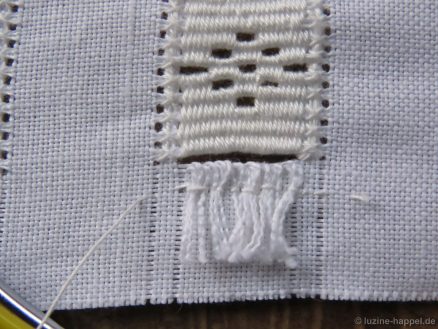
The long thread ends are cut about 4 cm from the opposite edge and withdrawn. Using coton à broder No. 16, blocks are first woven into the middle withdrawn-thread line over 10 bundles at a distance of 2 free bundles.
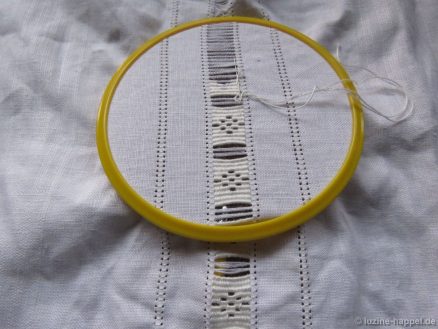
Then the spider blocks are worked over the two remaining thread bundles.
The threads for the side parts are withdrawn in the same way. The desired A-pattern is woven.

Shortly before reaching the opposite side, stop weaving, pull back the fabric thread ends to 2 cm from the edge and hold them in place on the back with short Back stitches.

The needle-waeving pattern is continued over the remaining bundles of threads, tied at the edge at each unit.
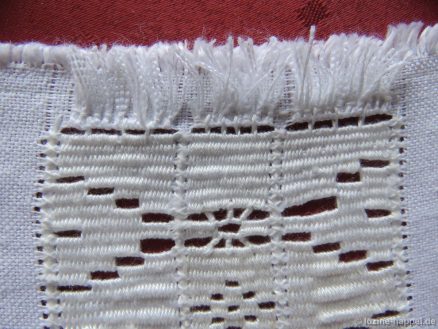
From the front it looks like this:

Then the needle-weaving hem is tied to the remaining fabric on the opposite side as well.
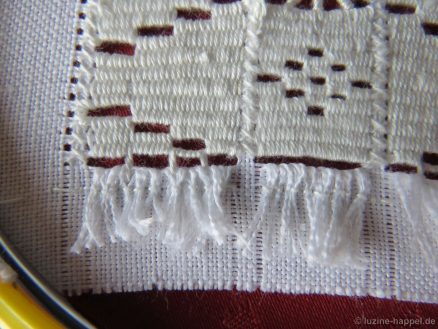
A pretty, expressive, wide needle-weaving hem is the result.
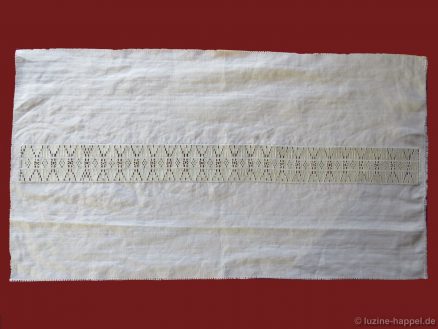
The embroidered linen is washed, starched and ironed and sewn together at the sides.
After turning, the fabric can be ironed on again if necessary. The pillow is pushed in. The bottom edges of the fabric are folded in at the 2cm line. The opening is closed with overcast hand stitches.
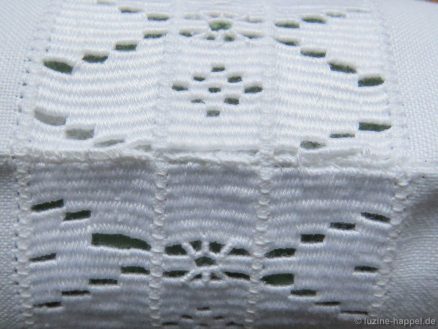
With not too much effort, a simple, clearly structured pattern was created that harmonises very well with the fabric stripes.

The combination of striped linen with needle-weaving has produced a classy-looking cushion cover.
